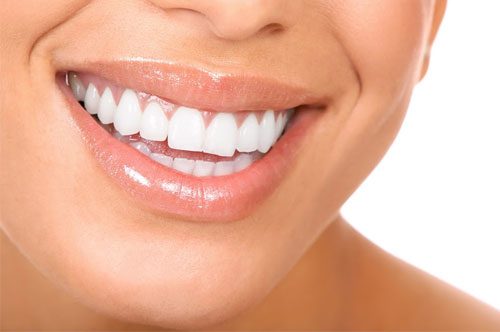Your teeth and gums work in harmony. Together, they help you chew, talk, and even look normal. (If you have ever seen anyone with way too much gums when they smile, you know that a certain amount of gums in your smile looks normal.) So when the gums have problems, you have problems with the way you chew, talk, and look. And if the problem is that your gums are receding and pulling away from your teeth, the problems can be severe.
Why Gum Recession Can Be Bad
Your teeth are designed to be partially exposed. The crown of the tooth is supposed to be open to the air, so you can eat normally. But the other end of the tooth is designed to be covered by your gums and often does not have the same amount of enamel covering it. That means exposing it to the air can put the tooth at a greater risk for tooth decay and sensitivity to heat and cold.
Your gums also help hold onto your teeth. When your gums begin to pull away from teeth, it’s easier for something to knock the tooth loose or even out.
What Causes Gums To Recede?
There are many reasons why gums can start to recede and pull away from your teeth, but they usually center on things that hurt or otherwise irritate your gums. When the gum tissue gets inflamed or irritated, it can pull away from your teeth.
- Smoking and tobacco use: This stuff can irritate and damage your gums, causing them to recede. (As if you needed yet another reason to stop using tobacco.)
- Accidents and/or injuries to the gums: If you took a baseball to the mouth or had a bad biking accident, such an injury could cause your gums to pull back.
- Dentures that don’t fit correctly: If your dentures don’t fit, they could be irritating your gums.
- Brushing and flossing too hard: Again, causing undue trauma to your gums can cause problems.
- Genetics: Some people are just predisposed to receding gums.
- Gum disease: Harmful bacteria causing problems with your gums can lead to gum recession.
The Old Way Of Treating Gum Recession
In the past, the only way to treat receding gums was through a gingival graft. In this procedure, a dentist or periodontist surgically removes some tissue, usually from the roof of your mouth. (Some dentists use a tissue bank, but this is rare.) Then the dentist grafts the tissue onto your existing gums, thereby covering more of the tooth like the gums should be doing.
Gingival grafts work, but they do involve cutting both the mouth and gums, creating two surgical wounds. And the healing time afterward can take up to three weeks. Neither is exactly ideal, but when you had no other choice, there’s was little you could do about it.
The Chao Pinhole® Surgical Technique
Instead of dealing with two surgical cuts, Dr. LoCascio was the first general dentist in Michigan to learn the Chao Pinhole Surgical Technique. This revolutionary procedure can bring your gums back to where they belong without cutting. Here’s how it works:
Dr. LoCascio makes a small pinhole in the area of the gums that has receded from your teeth.
Special tools are used to loosen gum tissue below the hole, which are carefully guided through the hole and back onto the teeth.
Several strips of collagen (a natural protein that acts like a glue holding our body together) are placed under the gums. This helps the gums stay where they are placed.
While this treatment is technically surgical, there is no cutting and no open wounds. The pinhole made by the needle closes all by itself, usually within one day. The pinhole technique can be completed in just a few minutes for each tooth, and local anesthetic is used to make this treatment almost painless. It is also a permanent procedure, meaning you should not have to get it done again.
With the Chao Pinhole Surgical Technique, Dr. LoCascio can use a minimally invasive treatment to move your gums back to the teeth and help prevent the problems caused by receded gums. If you are suffering from gum recession, call us today at 248-329-3552 and schedule an appointment with Dr. LoCascio.
Visit Highland Advanced Dental Care
We can see you as soon as tomorrow!





